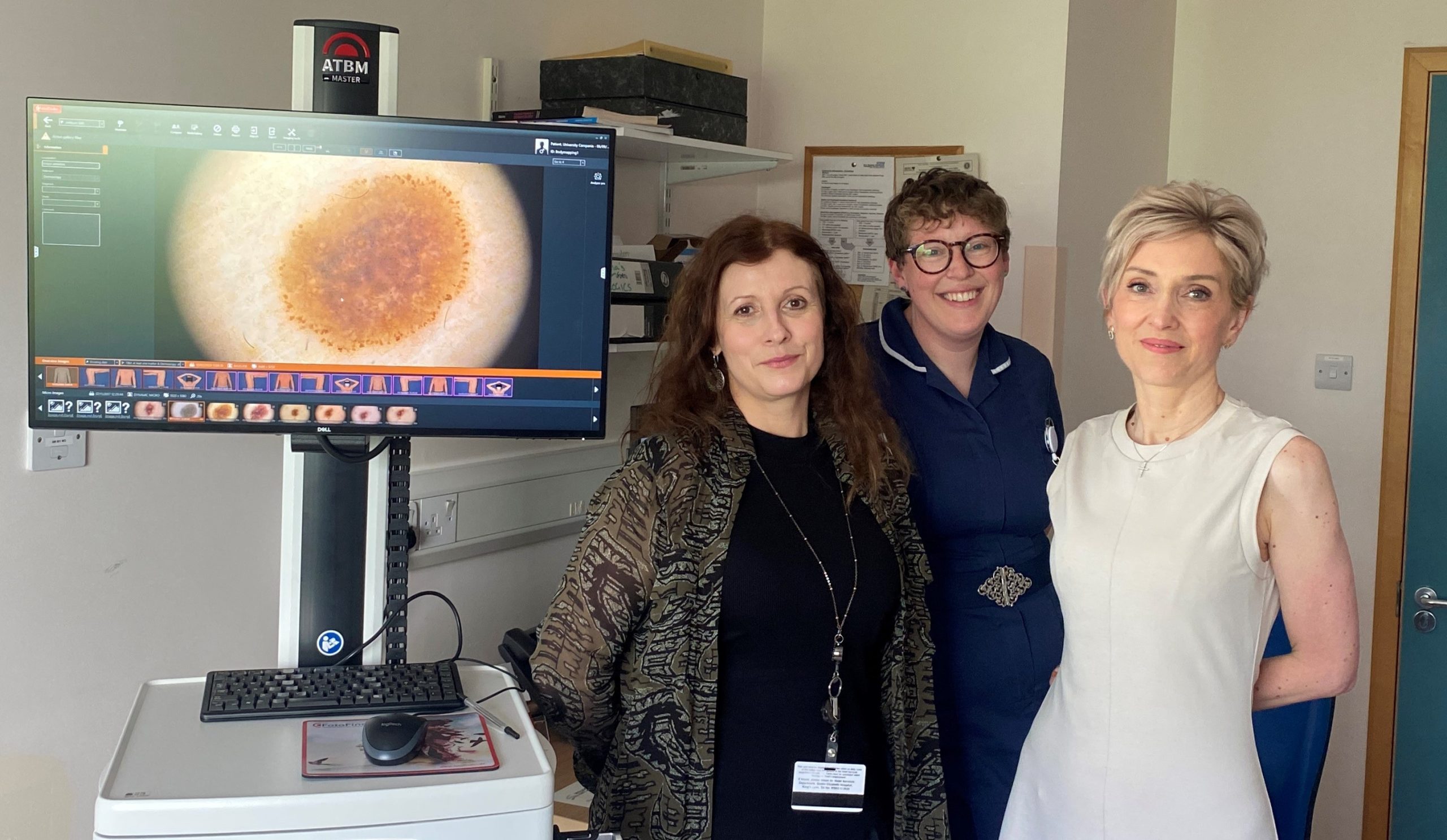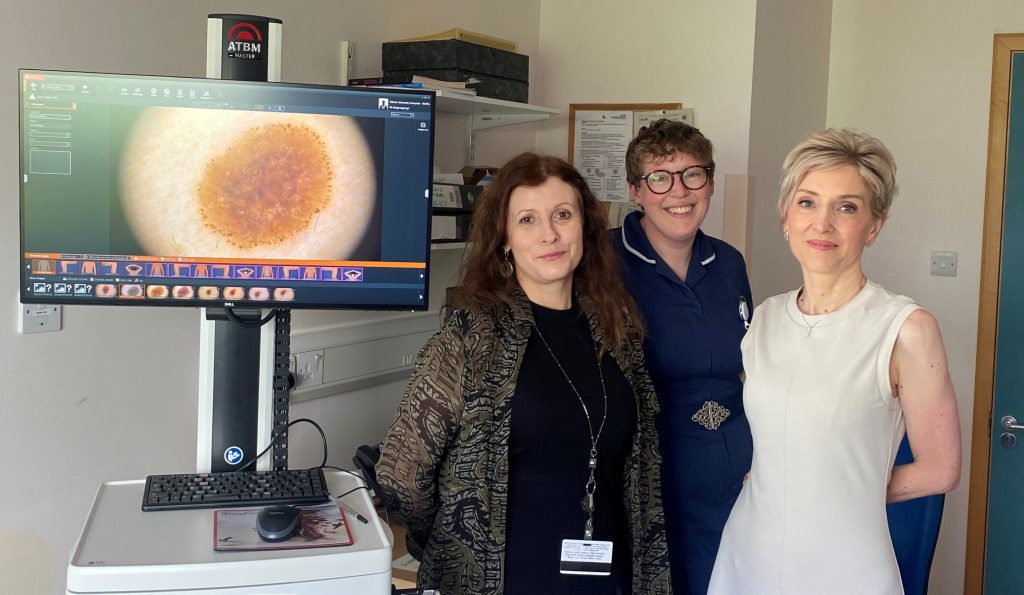A new clinic that detects the early signs of skin cancer in people at higher risk has opened at the Queen Elizabeth Hospital, King’s Lynn (QEH).
The Full Body Mole Mapping clinic uses an advanced imaging system known as FotoFinder® ATBM Master, which takes high-quality photographs of the skin and individual moles. This allows clinicians to track any changes over time.
The service is thought to be the first of its kind in East Anglia and welcomed its first patient last month.
Early detection
Dr Simina Stefanescu, Clinical Lead for Dermatology at The QEH said: “This new clinic offers a detailed way of monitoring high risk patients who are at increased danger of melanoma.
“By comparing images over time, we can spot small changes early and make more informed decisions about whether treatment is needed.”
Dr Boyana Pedersen, local skin MDT Lead Clinician at the hospital, is currently piloting the FotoFinder system alongside Skin Cancer Specialist Nurse, Laura Shaw.
Dr Pedersen said: “The technology captures high quality images of the lesions on the whole body and dermoscopy pictures of individual suspicious moles, which we can then review at follow-up appointments.
“This helps us to have a consistent base to monitor skin health over time and catch the dangerous lesions in time to treat them surgically.”
Providing reassurance
Laura added: “It is a great educational tool for both patients and health professionals.
“Not only does it help our understanding of early melanoma detection, but it can also provide a lot of reassurance to our high risk patients.”
Skin cancer is one of the most common types of cancer worldwide. While it can be serious, it is often treatable when found early.
The new clinic is aimed at patients who are already under the care of the hospital’s Dermatology team and meet specific medical requirements for closer monitoring.
Rebecca Martin, Medical Director at The QEH, commented: “We know how important early detection is when it comes to skin cancer.
“This service gives our patients access to the latest technology, helping us to monitor their skin more closely and act quickly when needed.”


